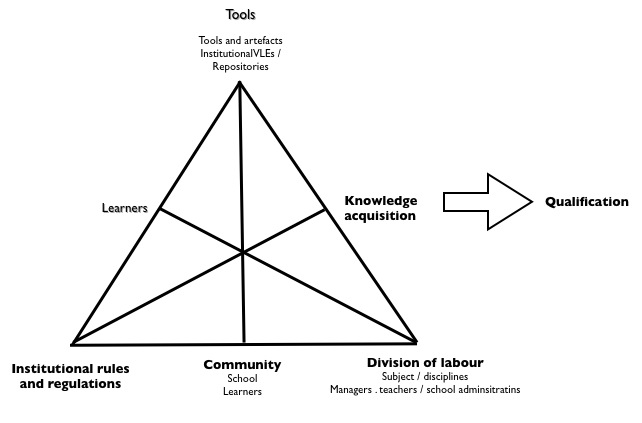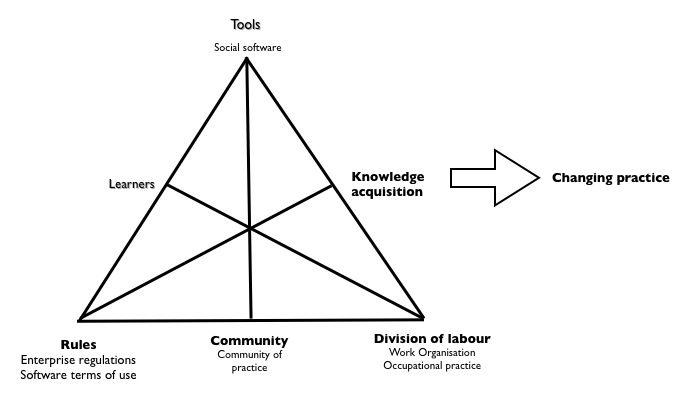Personal Learning Environments in the Cloud?
I am surprised that there has not been more discussion of the UK Open University’s decison to sign up to Google Education for cloud computing services.
On his blog Niall Sclater says:
“In our first foray into cloud computing, Google will be hosting for our students:
- email (gmail)
- contacts
- instant messaging and presence
- calendar
- document creation, storage and sharing
- websites”
Interestingly, The OU, the UK’s largest univeristy, will not at the moment be giving staff access ot the system, presumably becuase of concerns over security and confidentiality.
Niall explains the reasons for the decision :
“Growing numbers of institutions are now adopting cloud-based systems such as Google Apps for Education, particularly in the US. The arguments for hosting your own student email are becoming increasingly weak when it can be done externally for free, or at least much more cheaply. Google will provide a service level agreement with higher levels of availability than we could achieve ourselves. In addition there are other services included such as instant messaging that we don’t currently provide to students but could help them to connect more with each other.”
However the decision has interesting implications for pedgogic approaches. Niall says:
“These systems will increasingly start to compete with some of the features of learning management systems / virtual learning environments such as Moodle and Blackboard. They provide a higher level of individual control for students and potentially remove some of the administrative burden from the university. …
Another area for investigation is the use of Google Apps as an eportfolio system. Our initial research has shown that it would work for some of the key aspects of eportfolio provision such as the storage of documents under the control of the user, the exporting of these so they can be taken with them through life, and the creation of templates for the collection of structured data for a variety of purposes. We still need to work out how we can freeze or export eportfolio content where it is being for formal assessment.”
In a comment on the blog, Tim Hunt, also from the Open University, says:
“The VLE is the University’s space where it publishes its courses, and students come to study that material and perform some course-specific activities.
Google tools / ePortfolio / PLE / student’s own laptop are the student’s spaces for keeping and managing their learning.
In a traditional bricks a and mortar, chalk and talk setting, the VLE is the lecture room and labs; and Google tools are the student’s room in the hall of residence, or possibly their leaver-arch file.
I think it is clear that you need both types of space, and that they complement each other. However, there are some activities that could take place in either space.”
Manish Malik from Portsmouth University, which is already giving access to Google cloud services to all students, tries to distinguish between PLEs, VLEs, loosely coupled applications and what he calls a “CLE or Cloud Learning Environment”
” The cloud can be seen as one big autonomous system not owned by any educational institution. Let the Academics or Learners be the users, of some cloud based services, who all equally share the privelages like control, choice, sharing of content etc on these services. Then this is different from a PLE, a VLE and a PTE. For example Google Apps for universities is hosted on the cloud, not fully controlled by any educational institution and certainly not owned by one. The tools on it are to a great extent academic or learner controlled. Each “Google Site”, for example, can be owned by an academic or a Learner and both users be given the same rights/control by one another (depending on who creates first). Likewise Google Docs can be owned and shared between learners themselves or learners and academics under their own control.
This gives all parties the same rights on same set of tools. This clearly has potential to enable and facilitate both formal and informal learning for the learner. Both the academic and the learner are free to use the tools the way they wanted and share and collaborate with anyone they wanted.”
I think Malik is wrong is distinguishing between PLEs and CLEs (and to be honest, we really need just to advance our understandings of PLEs, rather than invent yet more acrobyms and terminology). If we go back to the blog entry which strated it all – Scott Wilson’s “The Future VLE?”, it was always clear that a PLE would include different third party services (even though cloud computing was not a term invented then as far as I know).
However, there are a number of interesting issues raised by the move towards cloud services for students.
Firstly, the services provided by Google make it very easy for s student to develop their own PLE. One of the long running concerns about PLEs has been whether or not all students have the knowledge and skills with technology to develop their PLE. This may overcome such concerns. Furthermore, in a podcast interview with Niall I made three years ago, he expressed the concern that university computer services had a duty to provide support for all applications a university was using for tecahing and learning. If PLEs were to be introduced he argued, this would be impossible due to the very diversity of different platforms and applications. Presumably, the deal with Google overcomes that issue.
Of course it is all to easy to see Google as the new evil empire, taking over education. But unless the nature of the deal between universities totally ties down systems, it should be relatively easy to integrate third party services with the Google apps, at least for someone with reasonable digital skills. And although Niall Sclater refers to ePortoflios, I see little difference in the way this is developing to a PLE.
Of course, there are worries about trusting a PLE to third party commercial companies. But data is not locked down on Google in the way it is on platforms like Facebook. it should be relatively simple for a learner to keep copies of important work and data on their own computers (and indeed to update those copies when they change computers).
Interesting, from my present interests, it should be relatively simple to integrate Google apps with the Android platform, this making mobile learning much cimpler (ignoring of course the problems with cross paltform use).
Of course the proof will be in the use. Will teachers start moving to Google apps rather than use the Open Univeristiy’s Moodle platform? Will learners develop their own PLEs? How will the Google apps integrate with univeristy services and applications. Will data be secure and will Google continue to support student PLEs even after they have left university: Is this just a new form of lockin? And how reliable are Google services? Do the moves by Portsmouth and the Open University herald a large scale shift by educational institutions to cloud services?
Most of all – will the use of these services provide new pedagogic affordances which will lead to changing practices in teaching and learning? Tims will tell.


